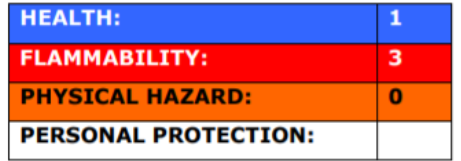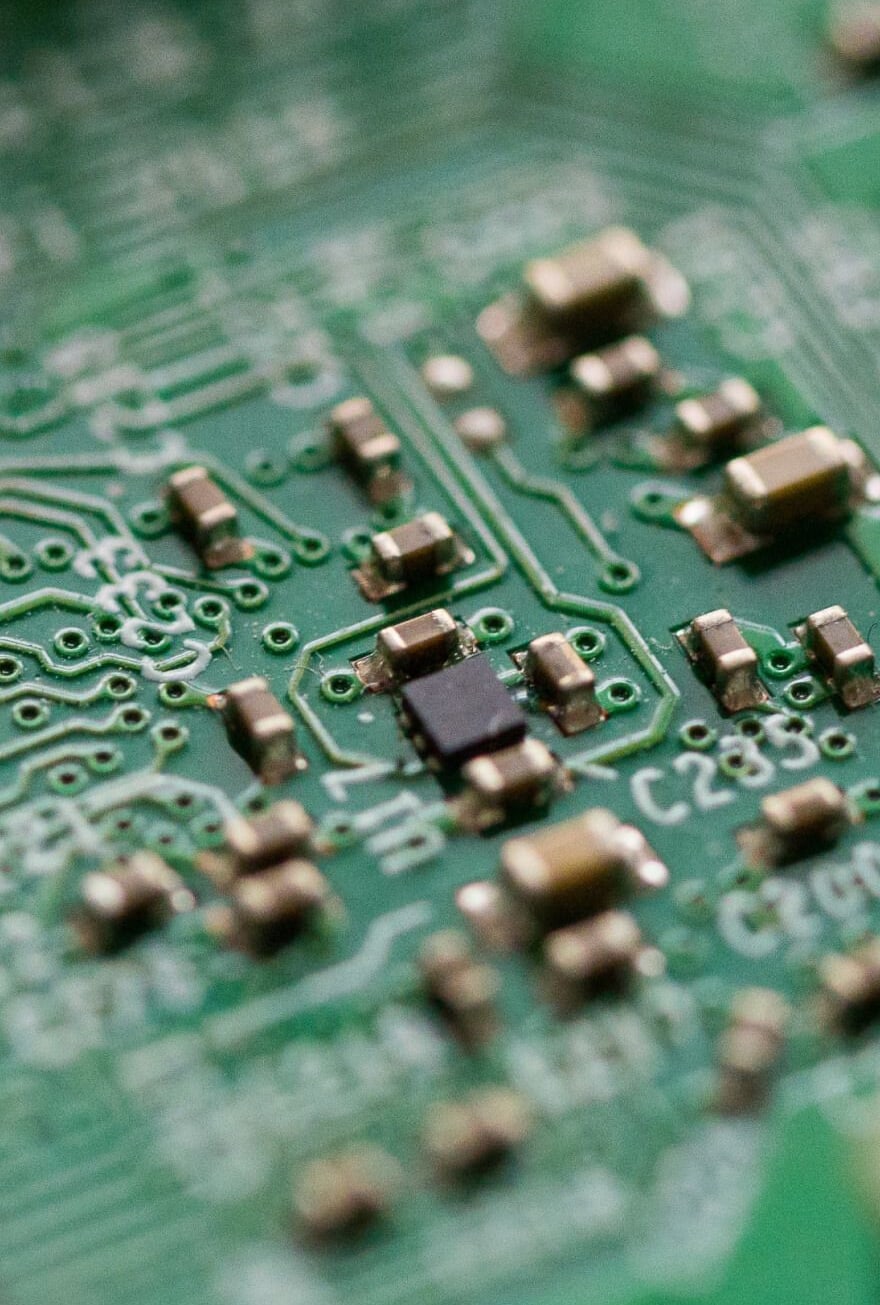Knowde Enhanced TDS
Identification & Functionality
- Chemical Family
- Product Type
- Technologies
- Product Families
Features & Benefits
- Labeling Claims
- Ready-to-Use Product Features
- Key Attributes
- Suitable for Use in Food Facilities as a Non-Food Chemical—Canadian and NFS recognition letters available on request
- Meets MIL Spec TT-I-735A and ASTM D770
- Meets reagent ACS
- Anhydrous solvent—Removes water and humidity from components leaving them dry
- Less than 0.001 g/100 mL non-volatile residues
- Excellent “Green Solvent” scores
- Safe for aqueous environments
- Low toxicity
Attention!
Consumer Product VOC Dilution Requirements
Residential or institutional users in California and other states (IL, IN, MI, OH, CT, DE, ME, MD, MA, NH, NJ, NY, PA, RI, VT, VA, DC, UT) with Electronic Cleaners 75% VOC limits must dilute the product 3:1 with water or acetone prior to use.
Applications & Uses
- Markets
- Applications
- Application Area
- Application Instructions
Follow the procedure below for best results.
Consumer product VOC dilution requirements
Residential or institutional users in California and other states (IL, IN, MI, OH, CT, DE, ME, MD, MA, NH, NJ, NY, PA, RI, VT, VA, DC, UT) with Electronic Cleaners 75% VOC limits must dilute the product 3:1 with water or acetone prior to use.
To clean residues
- Imbibe clean cloth.
- Wipe surface to be cleaned with cloth. OR
- Rinse area by pouring neat solution over it, with or without the use of a hog hair cleaning brush. a. Ensure that wash runs off the circuit board along the shortest unencumbered path to prevent redeposit of solvated residues. OR
- (Exceptionally) Immerse component in a container filled with a fresh 824 solution.
- Applications & Usages
Since the 824 is safe for most plastics, seals, ceramics, and printed circuit board components, it is used heavily in the electronics industry. It is great for cleaning printed circuit board components and electronic contacts and connectors. It is also used to clean oxides and grime on audio or video tape heads. It effectively removes light greases, oils, and flux without adding additional residues to contacts, relays, and circuit boards connectors. It is quick drying relative to water. Further, it can be used to wash off more aggressive organic solvents like acetone or toluene.
Properties
- Physical Form
- Appearance
- Clear, free from sediment, and suspended matter
- Odor
- Mild alcohol
- Physical Properties
- Environmental Properties
Environmental Properties Value Method Toxicity for Aqueous Environment Very low toxicity Literature Biodegration Readily biodegradable - Safety Properties
Safety Properties Value Method Flammability Highly flammable liquid and vapor Literature Flash Point 12 °C [54 °F] Boiling Point 82 °C [180 °F] Auto-ignition 425 °C [797 °F] Volatile Organic Content (VOC) 100%
| Value | Units | Test Method / Conditions | |
| Purity | min. 99.8 | % | Gas chromatography |
| Water Content | max. 0.10 | % | ASTM D 1364 |
| Color (Pt-Co scale) | max. 5 | Pt-Co scale | ASTM D 1209 |
| Acidity (Acetic acid) | max. 0.001 | % | ASTM D 1613 |
| Density (at 20 °C, 68 °F) | 0.785 - 0.786 | g/mL | ASTM D 4052 |
| Specific Gravity (at 20 °C / 20 °C) | 0.785 - 0.787 | g/mL | ASTM D 4052 |
| Dilution Range Initial Boiling Point | min. 81.8 | °C | ASTM D 1078 |
| Dilution Range Dry Point | min. 82.8 | °C | — |
| Non Volatile Matter | max. 0.001 | g/100 mL | ASTM D 1353 |
| Water Miscibility | Clear and miscible | — | ASTM D 1772 |
| Color | Colorless | — | — |
| Refractive Index (at 20 °C, 68 °F) | 1.3766 | — | — |
| Evaporation Rate (ButAc =1) | 2.9 | % | — |
| Heat Capacity | 11400 (0.612) | — | — |
| Viscosity | 3.4 | cP | — |
Regulatory & Compliance
- Certifications & Compliance
- Chemical Inventories
Technical Details & Test Data
- Compatibility
It is compatible with many plastics, seals, PCB components, paints, rubbers, and plant fibers.
Substrate Compatibility : Consult the 824 compatibility chart for a tentative compatibility list. These compatibility ratings should be considered as tentative due to variations in plastic manufacturers’ formulations and additives, as well as the processing conditions during cleaning.Attention !
Always perform a compatibility test on a non-critical area or a representative test substrate prior to use. Test even if the compatibility chart predicts a high compatibility: modern parts may incorporate undeclared sensitive materials (such as custom plastic blends, custom additives, protective coatings, or decorative coatings).
824 Plastics Compatibility Chart
Plastic type Resistance Epoxy Excellent ABS (acrylonitrile butadiene styrene) Fair to Poor PMMA (acrylic and plexiglass) Poor PVC (polyvinyl chloride) Excellent HD-PE (high density polyethylene) Excellent LD-PE (low density polyethylene) Excellent PP (polypropylene) Excellent PS (polystyrene) Excellent PC (polycarbonate) Excellent Nylon Poor to Severe Note: Rating is given for room temperature only. Heating the solution generally decreases the chemical resistance.
LEGEND
- Excellent = Negligible chemical attack over long exposures
- Good = Slight attack with minor absorption over long exposures
- Fair = Moderate attack with swelling, softening, loss of strength (may tolerate short term exposures)
- Poor = Not recommended due to possible crazing, cracking, discoloration, or loss of strength
- Severe Effect = Decomposition or dissolution after short exposures
824 Elastomers Compatibility Chart
Plastic type Resistance Nitrile Good Neoprene Good Silicone Excellent Butyl Rubber Excellent Latex Excellent PVC (polyvinyl chloride) Good Polyvinyl Alcohol Severe Effect Viton Excellent Note : Rating is given for room temperature only. Heating the solution generally decreases the chemical resistance.
Attention !
Do NOT use on computer monitors, tablet screens, or eyeglasses. This solvent is too powerful for the coatings used on these devices.
- Solvation Parameters
Solvation Parameters Value Solubility in water (%wt) ∞ Fully Miscible Solubility for water (%wt) ∞ Fully Miscible Dielectric constant (20 °C [68 °F]) 17.5 Surface Tension (25 °C [75 °F]) (dynes/cm) 21.4 Hansen Solubility Parameters
Total
Non-Polar
Polar
Hydrogen Bonding(MPa)½ 23.5 15.8 6.1 16.4 Note : Typical literature values
Safety & Health
- Health, Safety, and Environmental Awareness
Health and Safety : This liquid is highly flammable and should be kept away from flames and other ignition sources. Avoid breathing in fumes or direct contact with the material.
Environmental Impact : The 434 has is a VOC-exempt solvent in the USA and Canada. It is RoHS compliant.HMIS® RATING

NFPA® 704 CODES

Approximate HMIS and NFPA Risk Ratings Legend: 0 (Low or none); 1 (Slight); 2 (Moderate); 3 (Serious); 4 (Severe)
Packaging & Availability
- Packaging and Supporting Products
Cat. No. Packaging Net Volume Net Volume 824-450G Aerosol 553 mL/ 18.7 fl oz 450 g/ 14.5 oz 824-450GCA Aerosol 553 mL/ 18.7 fl oz 450 g/ 14.5 oz 824-WX25 Wipes 47 mL/ 1.6 fl oz 37 g/ 1.3 oz 824-WX50 Wipes 95 mL/ 3.2 fl oz 75 g/ 2.7 oz 824-WX500 Wipes 950 mL/ 32 fl oz 750 g/ 26.4 oz 824-100ML Bottle 125 mL/ 4.2 fl oz 98 g/ 3.2 oz 824-100MLCA Bottle 125 mL/ 4.2 fl oz 98 g/ 3.2 oz 824-500ML Bottle 475 mL/ 16 fl oz 373 g/ 13 oz 824-500MLCA Bottle 475 mL/ 16 fl oz 373 g/ 13 oz 824-1L Bottle 945 mL/ 32 fl oz 8.9 kg/ 19.6 lb 824-1LCA Bottle 945 mL/ 32 fl oz 8.9 kg/ 19.6 lb 824-1LX6 Bottle 945 mL/ 32 fl oz 742 g/ 1.64 lb 824-1LCAX6 Bottle 945 mL/ 32 fl oz 742 g/ 1.64 lb 824-1G Jug 3.78 L1.0 gal 3.0 kg/ 6.6 lb 824-20L Pail 20 L5.3 gal 15.7 kg/ 34.6 lb Supporting Products
- Acetone: Cat. No. 434-1L, 434-4L
- Hog Hair Cleaning Brush: Cat. No. 852
- Large Hog Hair Cleaning Brush: Cat. No. 853
Storage & Handling
- Shelf Life
- 5 Years
- Storage Properties
Properties Value Shelf Life @22 °C [72 °F]
Storage Temperature Limits a)5 y
-20 to 40 °C [-4 to 104 °F]a) Store in cool, dry, and well ventilated area.

